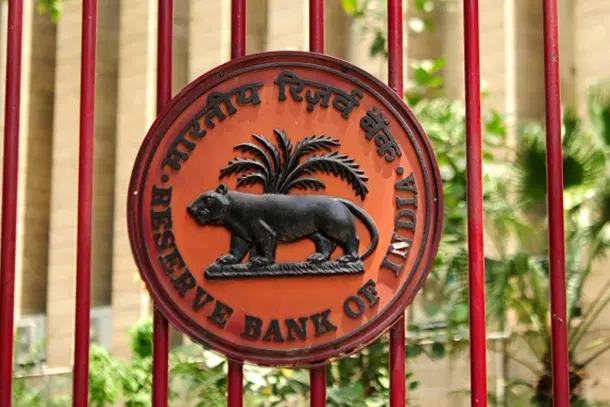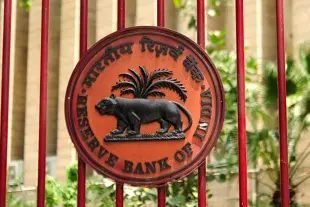Economics
As Headline Inflation Falls, RBI Must Respond With Timely Policy Rate Cut
Prasenjit K Basu
Oct 08, 2024, 11:48 AM | Updated 11:48 AM IST
Save & read from anywhere!
Bookmark stories for easy access on any device or the Swarajya app.


Headline inflation, as measured by the Consumer Price Index (CPI), has been below the Reserve Bank of India's (RBI) target of 4 per cent year-over-year (YoY) for the past two months (July and August 2024). As an inflation-targeting central bank, the RBI should therefore cut its policy rate by 25 basis points (bp) at its meeting this week.
In fact, at the last meeting of RBI's monetary policy committee (MPC), two of the three external members voted to cut the policy rate and to shift to a 'neutral' monetary stance from the restrictive 'withdrawal of accommodation' posture adopted since June 2022. With the terms of all three external members having ended and new members now in place, there is an element of uncertainty regarding the decisions the MPC will make at its meeting this week.
The US Federal Reserve and many other central banks target ‘core’ rather than headline inflation, excluding the impact of food and energy prices to arrive at that core measure. The logic is that food and energy prices are supply-driven and hence less amenable to being controlled via monetary policy, which primarily impacts aggregate demand.
India’s core CPI inflation has been below 4 per cent since December 2023. If the RBI had focused on core inflation, it would have been compelled to cut its policy repo rate by early 2024. However, food prices are crucial to the typical Indian householder’s well-being, and hence cannot be ignored by the RBI. Therefore, it is sensible to target headline rather than core inflation.
The US Federal Reserve cut its policy rate by half a percentage point last month, despite the fact that inflation, as measured by its preferred gauge of core PCE (personal consumption expenditure), was still well above its 2 per cent target — at 2.6 per cent in July and 2.7 per cent YoY in August 2024.
Monetary policy is expected to be forward-looking: as long as the trajectory of inflation is likely to be taking it towards its target, monetary policy usually adjusts in anticipation of that happening.
The RBI has been extremely wary of the volatility of food inflation, particularly vegetable prices, which spurted sharply upward in July 2023 and again in June 2024. Vegetable inflation was 37 per cent YoY in July 2023, and 29 per cent in June 2024. Although vegetables have a weight of just 6 per cent in the CPI basket, these sudden spurts in vegetable inflation have raised headline inflation sufficiently on both occasions, obliging the RBI to postpone plans to reduce the restrictiveness of its monetary stance, particularly after the June 2024 spike.
However, vegetable prices declined in August (although they were still more than 10 per cent higher than a year before), and appear to have moderated further in September. With food inflation abating, headline inflation was at a five-year low of 3.6 per cent in July and 3.65 per cent YoY in August. Five years ago, when inflation was slightly higher (3.99 per cent in September 2019), the repo rate was cut by 25 bp to 5.15 per cent.
Yet, recent statements by RBI governor Shaktikanta Das hint that the repo rate will remain unchanged at 6.5 per cent after this week’s MPC meeting. This is illogical, given that CPI inflation is now at the lower half of the RBI’s 2-6 per cent target and below the RBI’s stated near-term goal of not letting inflation exceed 4 per cent.
With global inflationary pressures easing, the US Fed, the European Central Bank (ECB), and several other central banks (including South Africa, Canada and the UK) have lowered their policy rates in the past few months. One consequence of the RBI not following the global trend is a rapid surge in India’s foreign exchange reserves, which have risen by US$35 billion in just the last seven weeks to a record level of US$705 billion on 27 September.
Only China, Japan, and Switzerland hold more forex reserves than India. As interest rates remain higher in India while declining elsewhere, upward pressure on the rupee is natural. To prevent rupee appreciation, the RBI is allowing foreign exchange reserves to rise rapidly.
With growth momentum slowing (to less than 7 per cent year-on-year growth in real GDP in the latest quarter, down from 8.2 per cent in FY2023/24) and inflation below its stated target, it is time for the RBI to lower interest rates. The fragile recovery in private investment, in particular, requires real interest rates to be lower.
With this year’s monsoon delivering 8 per cent more rain than the long-period average, a bountiful kharif harvest is expected. This will further reduce food inflation from next month onwards.
Achieving the goal of Viksit Bharat requires real GDP growth of 8 per cent or more annually over the coming decades. Therefore, an overly conservative approach to monetary management should not become an unnecessary obstacle to sustaining faster economic growth.
Prasenjit K. Basu is an economist and the author of 'Asia Reborn'.




